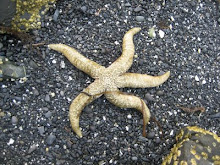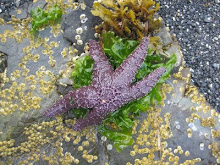In another life, I think I was a WW II submarine commander. Everything about submarines interest me. The photo above was a sub that I coordinated scuba courses for when I worked for MDA on Guam. We had an orientation meeting in the mess hall and we had 80 men in an area where no more than 20 could sit down and eat at a time. It was tight and I began to
think about a fast escape in an emergency. The U.S.S. Chicago is a Los Angeles class fast-attack sub. I had a chance to tour the bridge of the Chicago. All of the gauges and controls were covered and they told us not to take any photos. It was so cool to see the periscope. They explained that one guy sat at the dive depth controls and another guy sat at the direction controls and they were both directed by a control officer that took orders from the commander.
One day on the way to the sub on the base someone stopped me and asked me if I was special forces because I was dressed in khaki and had a beard. I told him I was a civilian dive instructor but I don't think he believed me. To get on the sub we had to first board a ship called a sub-tender. It was specifically set up to take care of subs if they needed resupply or repairs. Before we went aboard there was a guard with a shotgun, and all the sailors would salute to the flag on the way on and ask for permission to come aboard.
This next quote came from President Hinckley's book, STAND FOR SOMETHING.
One day while skippering a dive boat out to the dive site on Guam, I passed a Los Angeles class sub coming into Apra Harbor as I was leaving. The sub had slowed down and didn't leave much of a wake, so it seemed. Boy, was I mistaken. If you look at the photo above, you can see what size of a wake a sub is capable of producing. As we crossed the wake, we dropped down into a deep trough and as we came up out, we scooped a mass of sea water that soaked the people standing at the front rail up to the waist. I really bruised the ego of a Japanese guy who was well known in Japan as a diving guru on Guam. Being such an experienced diver, he should have known better, but there he stood, soaked up to the waist. The wall of water ran down the deck to the stern where it dropped back into the sea. People in the rest of the boat just got water up around their ankles. When it was over we all had a good laugh. All but the Japanese guy.
When we lived on Guam, I took a sailing course at the naval base. It was a blast. At the end of the course you could solo with one of their small sail boats out on Apra Harbor. One day I took Trevor with me. We had a great time sailing around the harbor. At one point we capsized the sail boat and then righted it. That is a very important skill to know as it is easy to capsize a small sailboat in the wind. Trevor must have been 9 or 10 and even though he had a life vest on it was a bit traumatic for him. We were sailing along having a blast without a care in the world when all of the sudden I heard a loud voice in a blow horn telling us to stay out of the shipping lanes. It was a huge submarine. As we steered out of the shipping lane we laughed like mischievous boys , which we were.
When I was delivering a vessel to a place called Cowichan Bay near Victoria, BC, I had the opportunity to tour a Russian Submarine. The sub had been built in 1971. We were acting silly and saluted for the photo.
I was in New York City a year or so later and toured the USS Submarine Growler that had been built in 1958. It was one of our first subs that fired nuclear warheads.. The older US sub was built better and was still in excellent shape. The Russian sub didn't even come close to the US sub. It was so evident that our technology was much more superior than theirs.
The submarine USS Growler is the only intact strategic diesel-powered submarine that fired nuclear missiles open to the public anywhere in the world.
USS Growler




























